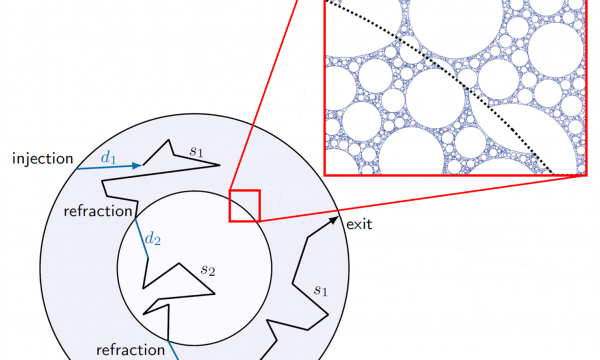Up to date, when describing light transport through the vast class of anomalous media, researchers always assumed that it was enough to simply replace the classical step length distribution with an anomalous one of choice. The work recently published on Advanced Theory and Simulations reveals that this is not sufficient, leading to macroscopic violations of multiple physical quantities that were not recognized in the previous literature. In anomalous transport, light acquires a “memory” of its past trajectory, which requires the introduction of new rules for its propagation – especially when crossing boundaries between different regions. This work successfully identifies the complete set of rules – a “recipe” for the correct modeling of anomalous light transport – validating it in a range of different scenarios and revealing some counter-intuitive consequences of its application to the case of finite heterogeneous media.
These results represent a generalization of classical transport and apply to all types of anomalous transport beyond light and optics, offering insights on both its physical interpretation and expected impact on experimental measurements.
F. Tommasi, L. Pattelli, S. Cavalieri, L. Fini, M. Paolucci, E. Pini, A. Sassaroli, F. Martelli, Anomalous Radiative Transfer in Heterogeneous Media. Adv. Theory Simul. (2024), 2400182

